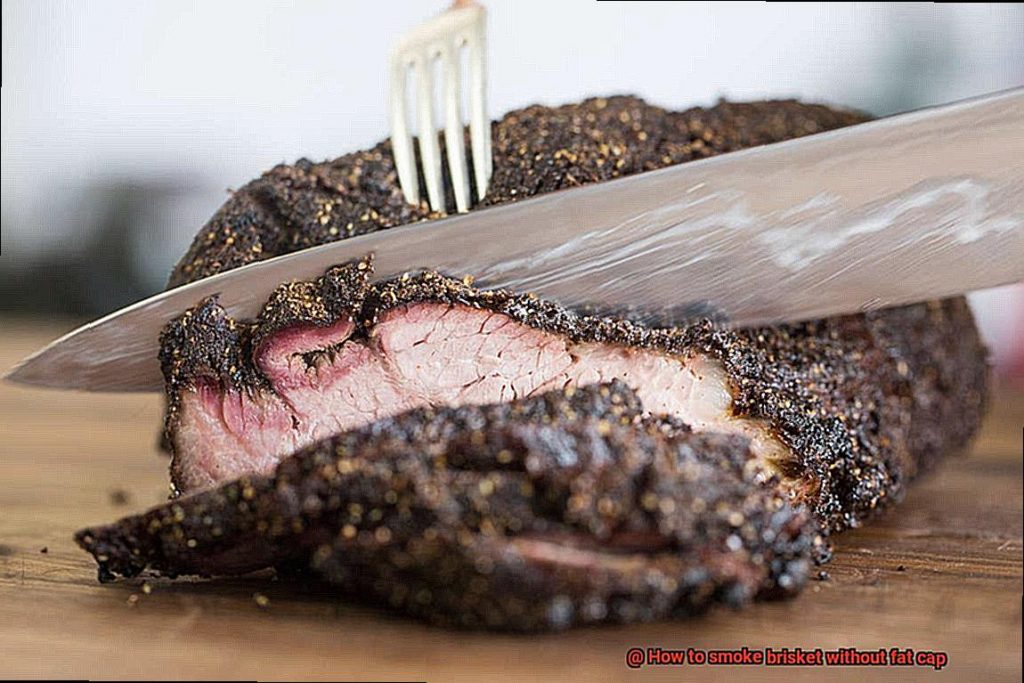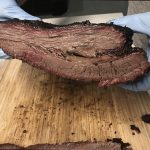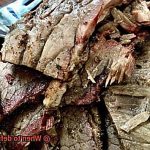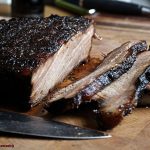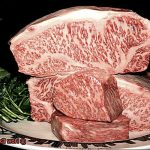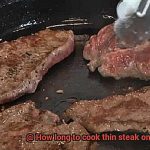Are you a BBQ fanatic who craves the taste of a succulent brisket, but wants to avoid the fatty cap? Look no further. Smoking a brisket is an art that requires patience, skill, and attention to detail. But fear not. With a few tweaks to your smoking technique, you can create a mouth-watering brisket that’s tender, juicy, and free from excess fat.
To start, it’s crucial to prepare your brisket correctly for optimal cooking. Trim off any extra fat and season it with your favorite spices. Next up is choosing the right wood – this is key in adding that unique smoky flavor that makes brisket so irresistible. Finally, monitoring the temperature and cooking time closely will prevent overcooking or drying out your meat.
In this post, we’ll delve into the nitty-gritty details of how to smoke a brisket without a fat cap. From trimming techniques to wood selection and temperature monitoring, we’ve got you covered. With our expert tips, you’ll be able to produce a deliciously moist and flavorful brisket that will leave your guests begging for more at your next BBQ gathering.
So fire up those smokers and get ready to impress with your newfound knowledge on how to smoke a perfect brisket without the fatty cap.
Contents
Why Remove the Fat Cap?
Imagine the fat cap as a protective layer that prevents seasoning from penetrating the meat. When you season your brisket, you want those flavors to reach every part of the meat, but if there’s a thick layer of fat covering it, the seasoning may not be able to fully penetrate. This can result in a lackluster and uninspiring brisket.
Furthermore, leaving the fat cap on can obstruct smoke absorption. The smoke flavor is a vital component in any smoked meat, and the fat cap can act as a barrier, preventing the smoke from reaching the meat. This means that your brisket may end up with less flavor than expected.
Lastly, leaving the fat cap on can lead to uneven cooking. The fat renders during cooking, causing one side of the brisket to cook faster than the other. This can result in some portions of the meat being overcooked or undercooked. To avoid this, it’s best to remove the fat cap entirely before cooking.
It’s important to note that not all pitmasters agree on removing the fat cap. Some believe that leaving it on can help keep the meat moist during cooking. However, if you choose a high-quality cut of meat with good marbling and cautiously monitor its internal temperature while cooking, you can achieve a juicy and flavorful brisket without the fat cap.
In conclusion, removing the fat cap before smoking your brisket is necessary for maximum flavor and even cooking. By doing so, you can ensure that your seasoning penetrates every part of the meat and that your smoke flavor is not obstructed by a layer of fat.
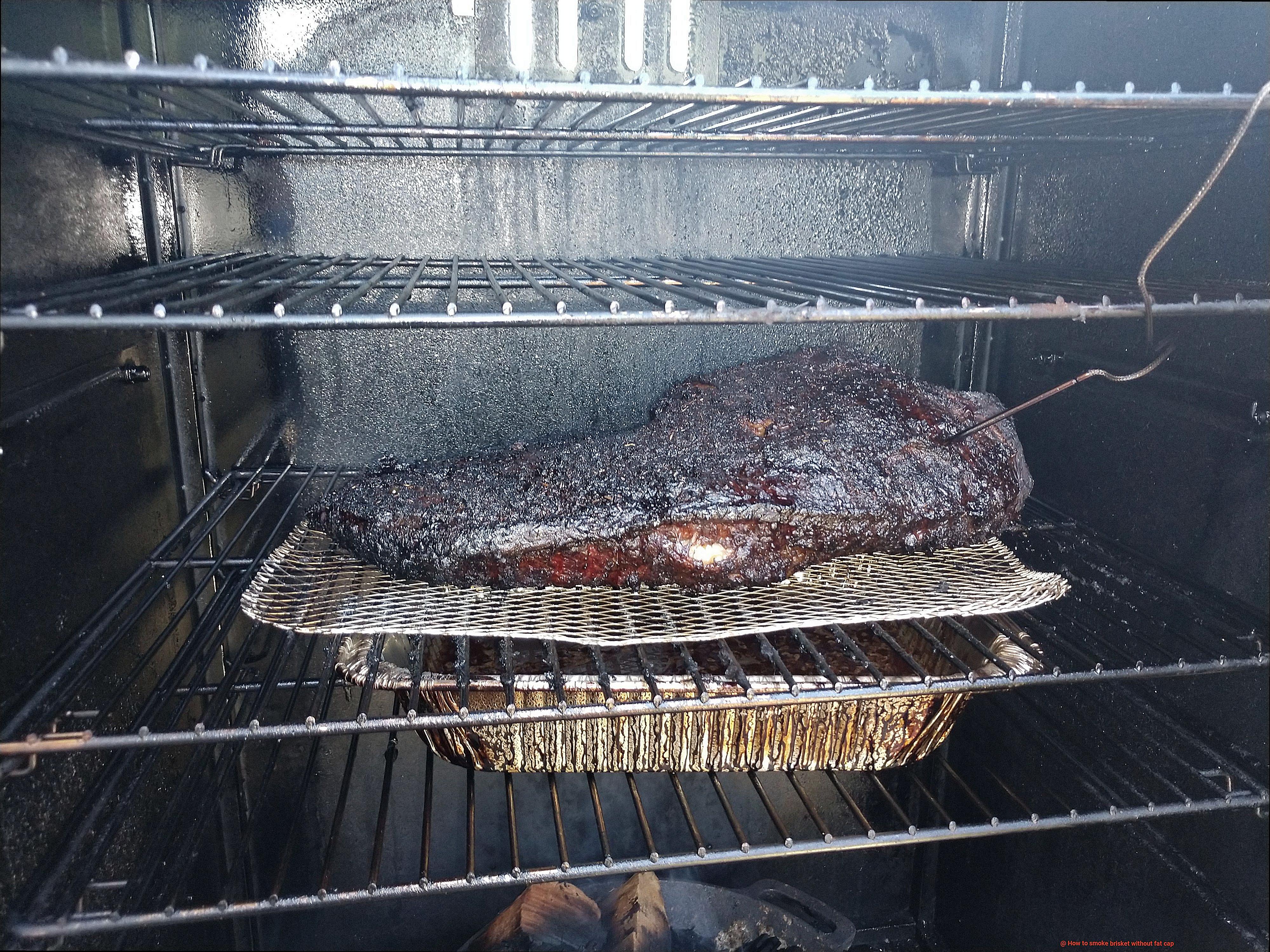
Choosing the Right Cut of Meat
If you’re eager to smoke your brisket without a fat cap, then choosing the right cut of meat is a crucial first step. Think of it like picking the perfect tunes for your party playlist.
The ideal cuts for smoking brisket without a fat cap are the flat/first cut or the point/second cut. These leaner cuts have less fat than a full packer brisket, which means there won’t be a thick layer of fat on top. Choosing a leaner cut of meat is like wearing a light and breezy outfit on a hot summer day – it just makes sense.
But it’s not just about the cut of meat, it’s also about quality. Opt for a brisket that has a bright red color and is well-marbled with fat throughout the meat. This marbling provides moisture and tenderness during the smoking process. It’s like selecting the perfect dance partner – someone who can keep up with your rhythm and keep things exciting all night long.
When it comes to size, smaller is better when smoking without a fat cap. A 4-6 pound brisket is perfect for beginners as it will cook faster and be easier to manage during the smoking process. It’s like inviting only your closest friends to your party, ensuring everyone has an unforgettable time.
Lastly, don’t forget to trim any excess fat or silver skin from the meat before smoking. This allows the smoke to penetrate the meat more evenly and prevents any flare-ups in your smoker. It’s like removing any obstacles that may hinder your guests from having a good time.
Seasoning the Brisket
You’ve already nailed down the perfect cut of brisket and trimmed it to perfection. Now, it’s time to add some delicious seasoning to elevate the flavor profile of your meat.
Seasoning your brisket is like creating the perfect ambiance for a party – it sets the tone and keeps everyone happy all night long. When smoking brisket without a fat cap, proper seasoning is crucial to ensure that your end product is moist and flavorful.
The traditional method of seasoning a brisket involves applying a dry rub or marinade to the meat and allowing it to sit overnight. For a mouth-watering dry rub, look for one that contains a balance of sweet and savory flavors. Brown sugar, paprika, garlic powder, onion powder, and black pepper are all great options. Generously apply the rub to all sides of the brisket, making sure to work it into every nook and cranny.
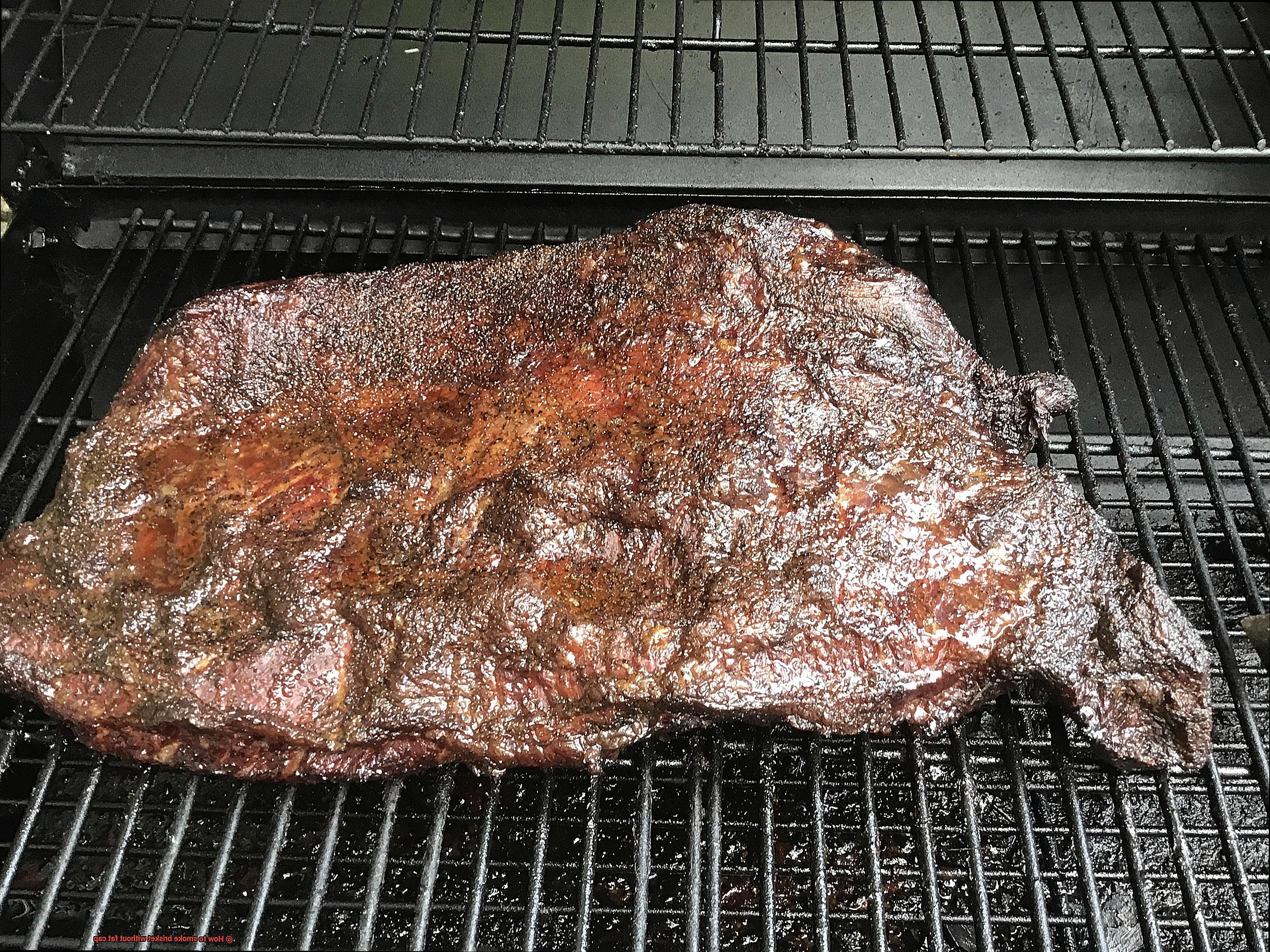
If you prefer a more tenderized meat, marinating your brisket in acidic ingredients like vinegar or citrus juice along with herbs and spices will do the trick. This method not only adds flavor but also helps break down those tough muscle fibers, resulting in a juicy and tender final product.
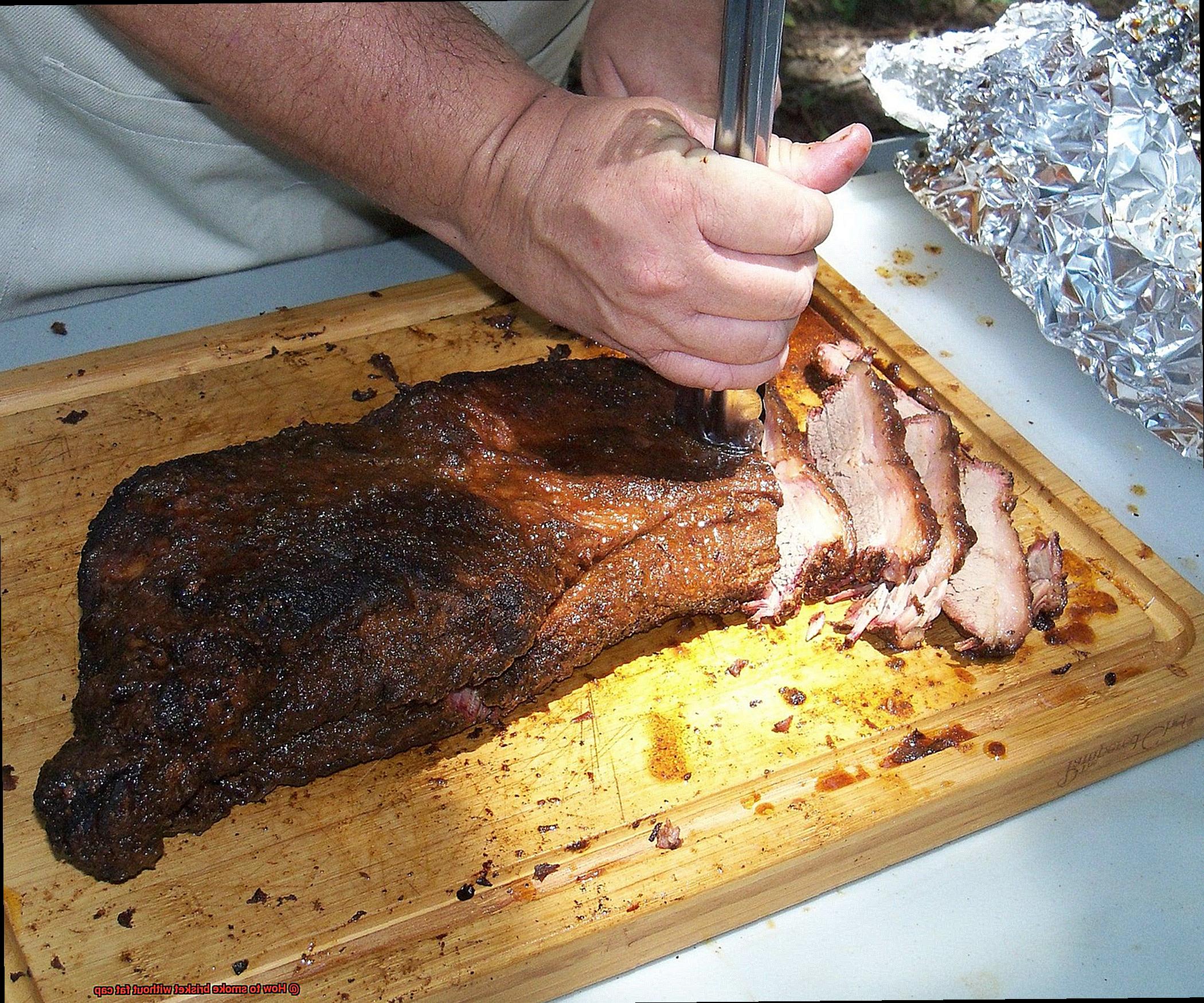
No matter which seasoning method you choose, letting your brisket sit at room temperature for at least an hour before smoking is essential. This allows all those delicious flavors to meld together and create a symphony of taste in your mouth. Remember to keep your meat moist by spritzing it with water or apple juice every hour during the smoking process.
So there you have it, folks – seasoning your brisket without a fat cap is like creating an unforgettable atmosphere for your guests.
Setting Up Your Smoker
One of the most important aspects of smoking brisket is properly setting up your smoker. In fact, it’s the key to ensuring that your brisket is cooked evenly and retains its moisture throughout the smoking process. Let’s dive in.
Step 1: Clean Your Smoker
Before you start smoking your brisket, give your smoker a good cleaning. Make sure it’s free from debris or leftover ash, so your brisket cooks evenly and doesn’t pick up any unwanted flavors.
Step 2: Add Wood Chips or Chunks
Next, it’s time to add some flavor to your meat. Add your preferred type of wood chips or chunks to the smoker box. Hickory, oak, and mesquite are all popular choices for smoking brisket. The type of wood you use will affect the flavor of your brisket, so choose wisely.
Step 3: Preheat Your Smoker
Now it’s time to fire up that smoker. Preheat it to 225°F – this temperature is perfect for smoking brisket. Keep in mind that maintaining a consistent temperature throughout the smoking process is critical for optimal results.
Step 4: Place Your Brisket on the Cooking Grates
Once your smoker reaches the desired temperature, it’s time to place your precious brisket on the cooking grates. Be sure to position it fat side down. This will allow the natural juices of the meat to baste the brisket as it cooks and keep it moist.
Step 5: Monitor Internal Temperature
Now comes the fun part – monitoring the internal temperature of your meat with a meat thermometer. For perfectly smoked brisket, aim for an internal temperature between 195-205°F. Depending on the size of your brisket, this could take several hours.
Step 6: Add More Wood Chips or Chunks
While your brisket is smoking away, don’t forget to check on your wood chips or chunks periodically. Add more as needed to ensure that your brisket continues to smoke evenly throughout the cooking process.
By following these six simple steps, you’ll be on your way to smoking a mouthwatering, tender brisket without a fat cap.
Monitoring Internal Temperature
Smoking a brisket without a fat cap can be a challenging task, but with the right tools and techniques, you can create a mouth-watering, tender brisket that will have your taste buds dancing. However, to ensure it’s cooked to perfection, monitoring the internal temperature of your brisket is critical.
The ideal internal temperature for brisket is around 205°F, which can be achieved by cooking the meat low and slow for several hours. But how do you monitor this temperature? There are several methods to do so, and we’ll explore some of them here.
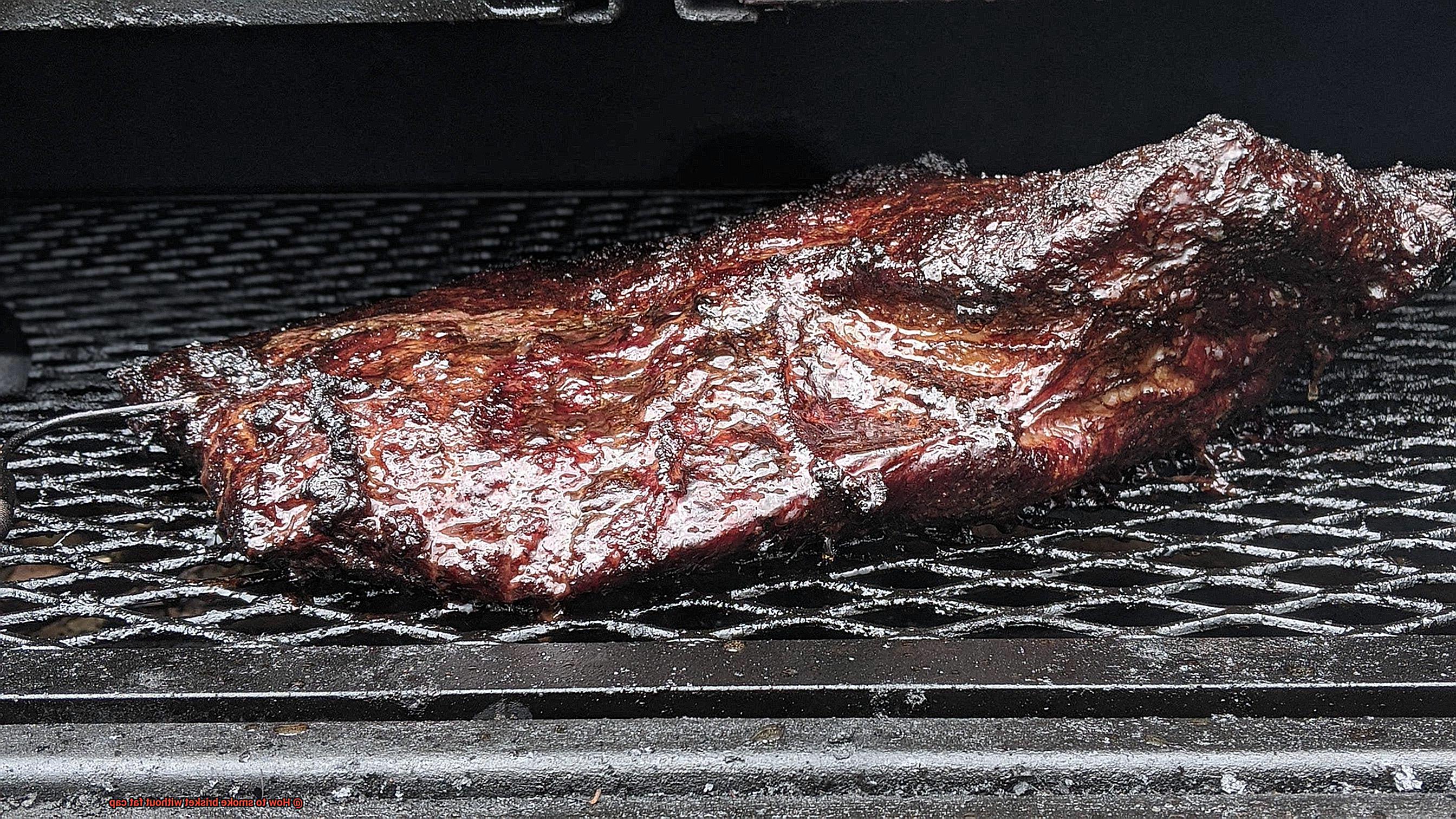
One of the most common methods is using a digital meat thermometer. This tool works by inserting a probe into the thickest part of the meat and displaying the temperature on a digital screen outside the smoker. With this method, you can monitor the temperature without opening the smoker and losing heat.
Another approach is using a probe thermometer with a remote display. It also comes with a probe inserted into the brisket, but it has a remote display that enables you to monitor the temperature from outside the smoker. This way, you can adjust the temperature as needed without opening the smoker.
It’s crucial to remember that after removing the brisket from the smoker, its internal temperature continues to rise. Known as carryover cooking, this phenomenon can increase the internal temperature by up to 10°F. To avoid overcooking your brisket, remove it from the smoker when it reaches an internal temperature of around 195°F and let it rest for at least 30 minutes before slicing.
In conclusion, monitoring your brisket’s internal temperature is critical for achieving a perfectly cooked and delicious meal. Whether you choose to use a digital meat thermometer or a probe thermometer with a remote display, checking your brisket’s internal temperature regularly will ensure it’s cooked to perfection. With practice and patience, smoking a brisket without a fat cap can result in a flavorful and tender meal that will impress your family and friends.
Letting the Brisket Rest After Cooking
Smoking brisket without a fat cap is no easy feat, but with the right techniques, you can achieve a mouth-watering result. One essential step in this process is letting the brisket rest after cooking, and we’re about to explain why.
When you smoke a brisket, the heat causes juices to move towards the surface, which can lead to evaporation if there’s no fat cap. But by letting the meat rest, you allow those juices to redistribute throughout the brisket, resulting in a more tender and flavorful bite.
So, how do you let your brisket rest properly? First, remove it from the smoker and wrap it tightly in aluminum foil or butcher paper. Then, place it in a cooler or insulated container to keep it warm for at least an hour or two. This process allows the temperature to stabilize and the meat to relax, ultimately leading to a more succulent brisket.
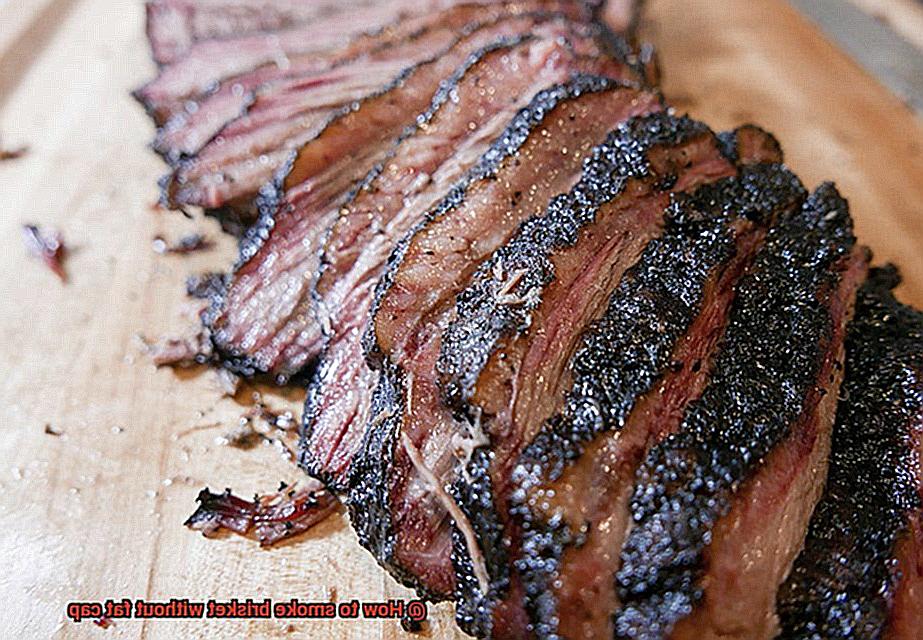
It’s crucial not to rush this step. Slicing your brisket too soon can cause all the juices to drain out, leaving you with a dry and tough cut of meat. By being patient and giving your brisket time to rest, you’ll also find that it’s easier to slice evenly and thinly, which is vital for presentation.
In summary, letting your brisket rest after smoking is essential for achieving that perfect tender and juicy bite. So be patient, wrap it up tight, and give your smoked brisket the time it needs to rest before slicing and serving.
VxIKcNryVgc” >
Conclusion
Don’t let the thought of smoking a brisket without the fat cap intimidate you. With the right techniques and tools, you can create a deliciously tender and juicy brisket that will have your guests coming back for seconds. The key to success is in the preparation – selecting the right cut of meat, seasoning correctly, setting up your smoker properly, monitoring temperature regularly, and allowing for proper rest time.
Removing the fat cap before smoking is essential for maximum flavor and even cooking. Opting for leaner cuts such as flat or point cuts is ideal when going without a fat cap. Proper seasoning is crucial to ensure a moist and flavorful end product. Setting up your smoker correctly by cleaning it, preheating to 225°F, positioning the brisket fat side down on grates, and monitoring internal temperature are all important steps to achieve that perfect bite.
But don’t forget about rest time. Letting your brisket rest wrapped tightly in aluminum foil or butcher paper in an insulated container for at least an hour or two before slicing and serving will lead to a succulent result.
While smoking brisket without a fat cap requires practice and patience, these expert tips will set you on the path to success.

